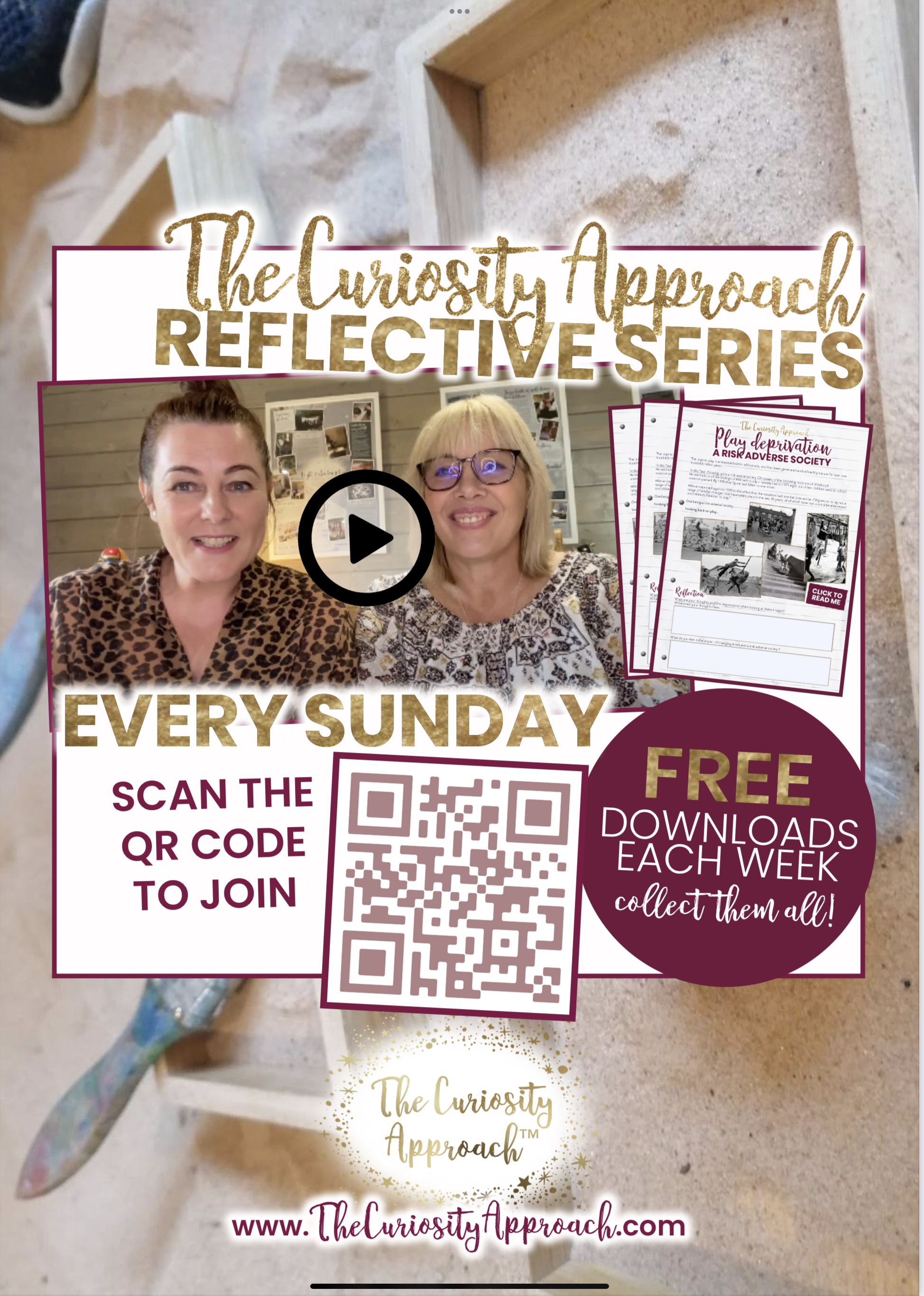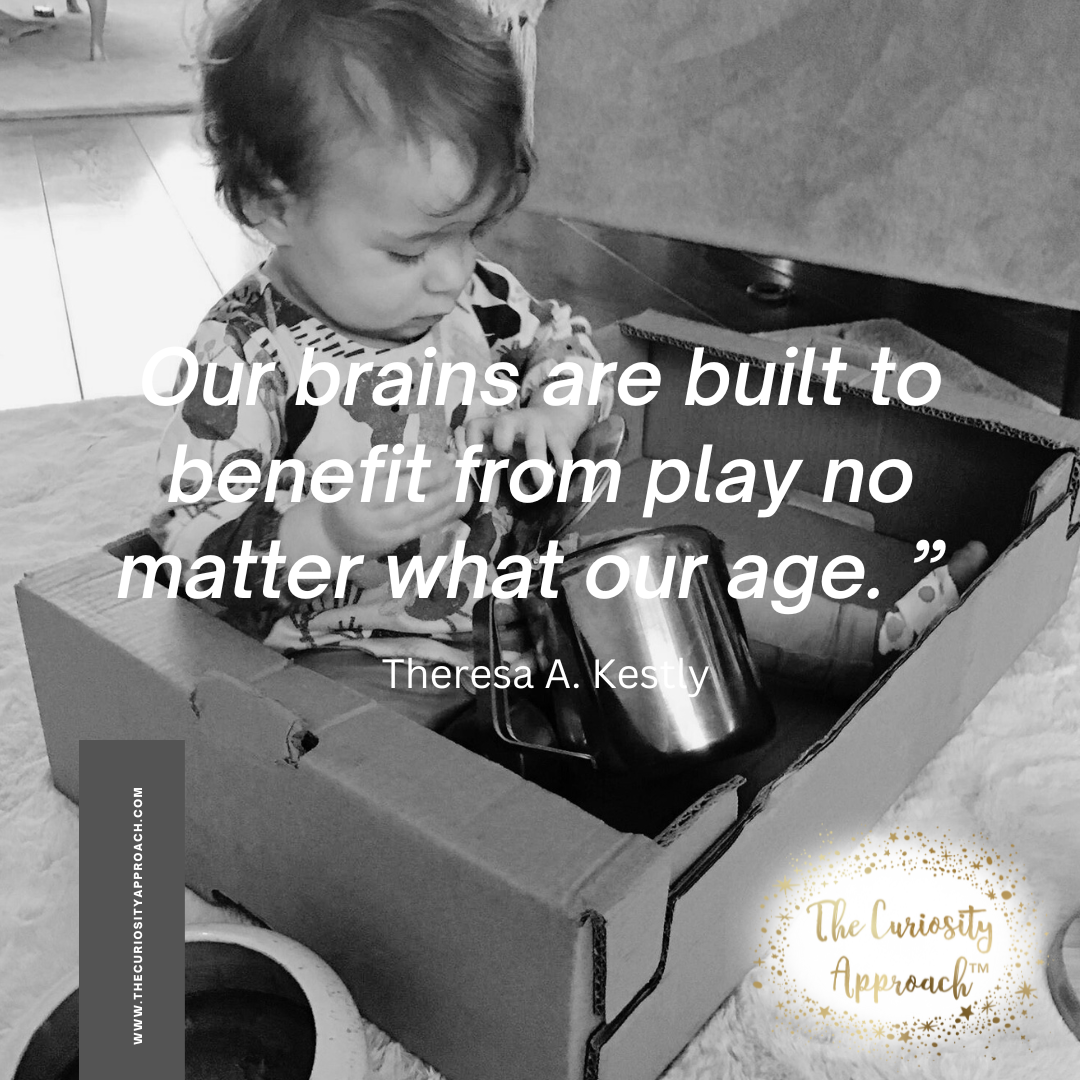Unveiling the 6 Stages of Play in Early Childhood
Release Date: November 15, 2023
Last Updated: November 15, 2023
In the enchanting realm of early childhood, play serves as a gateway to exploration, creativity, and pure joy. Every child's journey through play is a tapestry woven with unique experiences and developmental milestones. Today at The Curiosity Approach® we embark on a captivating exploration of the 6 stages of play, an enlightening voyage that sheds light on the magic within each stage.
Unoccupied Play: 0-3 Months
During the first few months of life, infants engage in ‘unoccupied’ play, a stage characterised by their awe-inspiring discovery of their hands, body and surroundings. The very first toy of a baby, is the discovery of their fingers and toes. Babies don’t need expensive toys or to be entertained by gadgets, baby gyms or paraphernalia. They need the freedom and opportunity to play. ( Have you watched our Team Gathering all about ‘ The Freedom to move?’ It’s a 60 minute CPD session that will explain WHY we don’t use baby gyms. See link here to find out more https://the-curiosity-approach...
PONDERING? Why is it called unoccupied? Have you ever watched a baby who has just discovered their fingers and hands? Ohhh my goodness - they are fascinated, encapsulated by this new discovery. They are totally immersed and most certainly ‘occupied.’
As little explorers, they make delightful movements with their arms, legs, hands, and feet, reveling in the joy of their newfound physical abilities. This stage lays the foundation for cognitive and physical development, as infants gradually learn to control their bodies and explore the world around them.
To nurture this stage, provide a safe and stimulating environment where your baby can freely observe and interact with captivating objects. At The Curiosity Approach® we are inspired by the work and research of Emmi Pikler, who suggests that babies need to be fed, happy and well rested, then placed on the floor to play, providing them the freedom and opportunity to move, stretch, turn and roll. The environment around them, awareness of their own bodies provide visual and sensory stimuli which encourage curiosity and the development of fine motor skills.
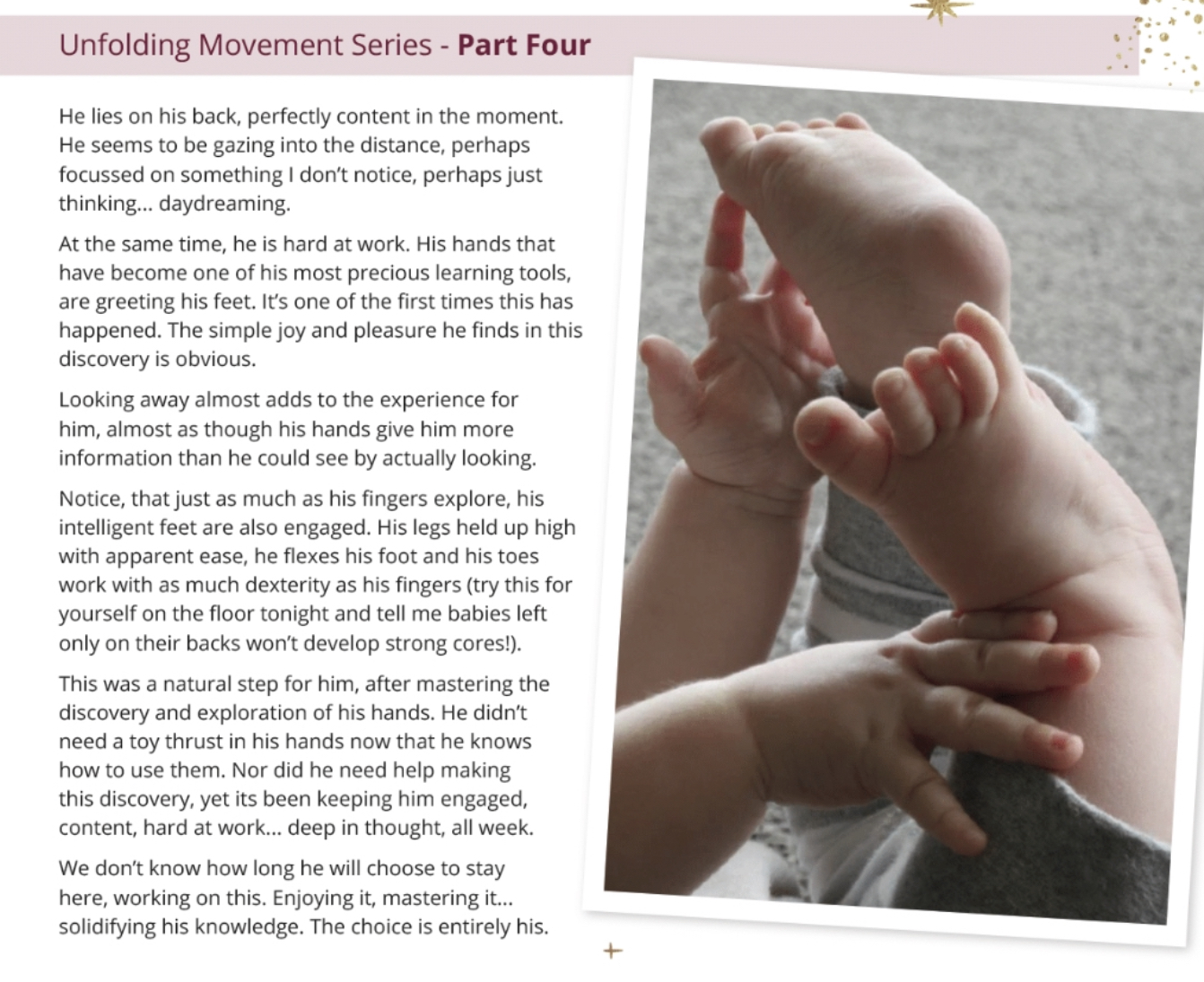
This image above, is taken from the document ‘unfolding movement’ by Helen Armstrong and part of The Curiosity Approach download series available on our Curiosity Approach® App
Solitary Play: 0-2 Years
Solitary play marks a period when children are content to immerse themselves in independent play. It is a time when their imagination blossoms, and they engage in self-directed activities. During this stage, children become architects of their play, creating stories, experimenting with objects, and exploring their surroundings with uninhibited curiosity.
To encourage solitary play, provide a variety of larger loose parts and intelligent resources that stimulate different senses and offer open-ended possibilities. At The Curiosity Approach® we would provide treasure baskets and heuristic play materials which can captivate their attention and spark their creativity. Allow them uninterrupted time and space to explore, fostering independence and self-confidence. Read previous blogs on ‘Treasure baskets.’ https://www.thecuriosityapproa...
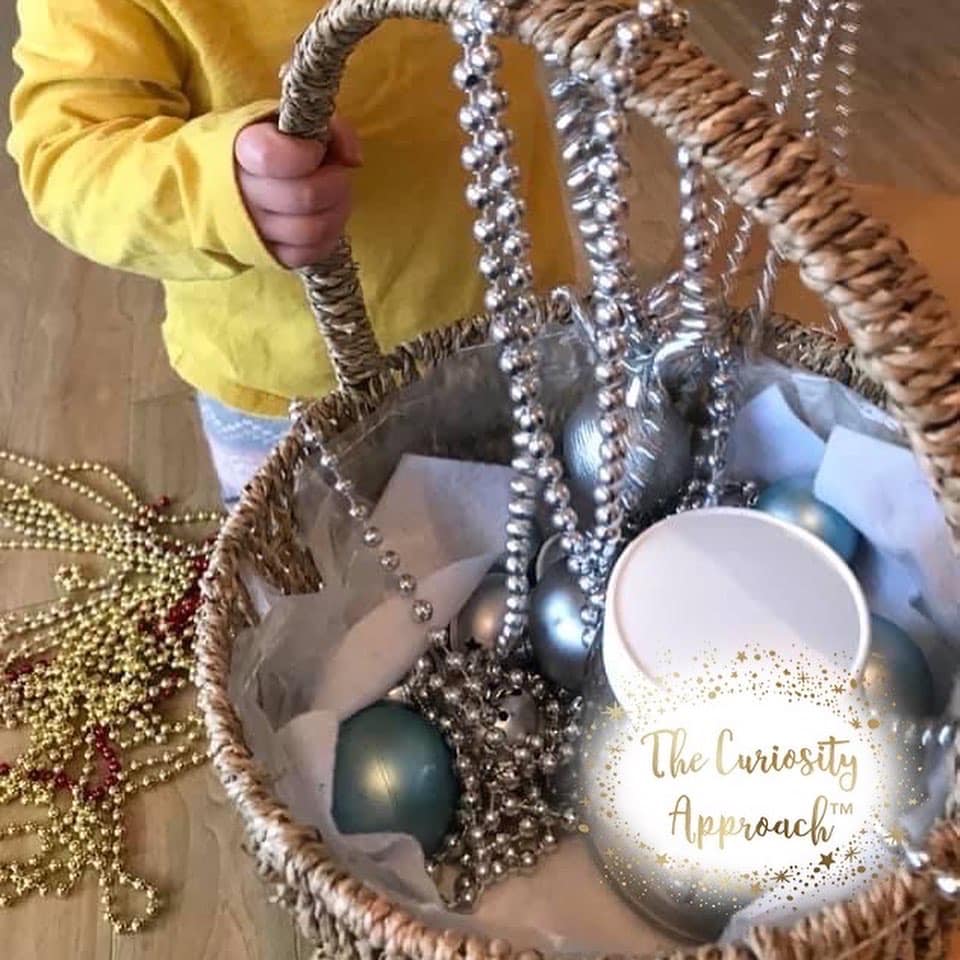
Onlooker Play: 2 Years
At around two years old, children enter the onlooker play stage, where they observe other children engaging in play without actively participating. This stage is crucial for developing social awareness and communication skills. As little observers, they absorb valuable insights into the dynamics of play, learning from their peers' actions and interactions.
To foster onlooker play, create opportunities for your child to witness and comprehend the nuances of play. Be present and connected to what is happening within your provision or at home. Where appropriate, encourage conversation and gentle commentary, helping them make connections and understand the social aspects of play. ( be mindful not to bombard a child or probe questioning constantly) This stage sets the stage for future social interactions and lays the groundwork for empathy and understanding. It’s a time of connection, reassurance and understanding. A time to recognise that children need time and space, age and stage appropriate experiences in order to be ready and confident for parallel.
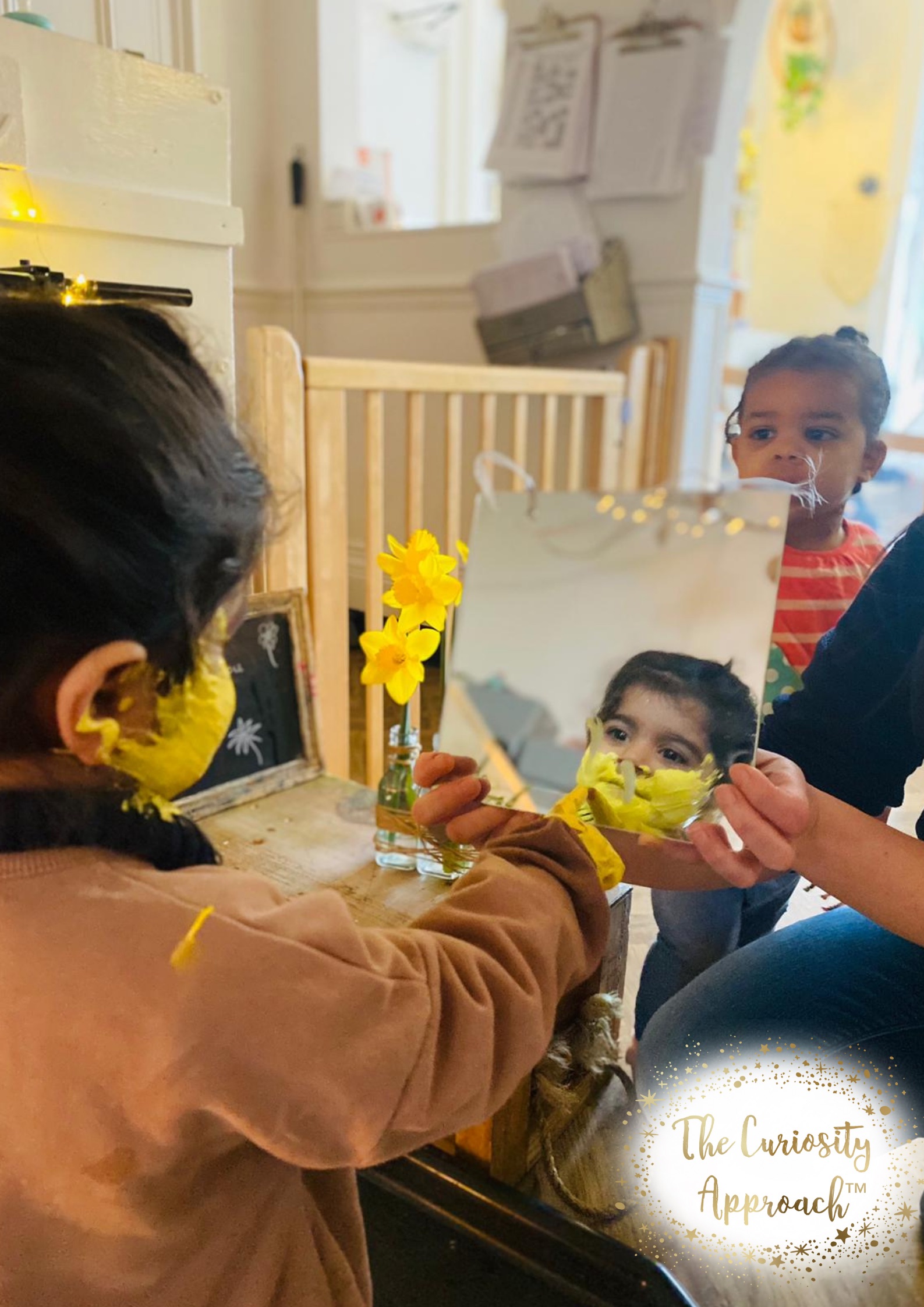
Parallel Play: 2+ Years
Parallel play is a captivating stage where children play alongside or near others without direct interaction. It is a bridge between solitary play and more socially interactive stages. During parallel play, children may acknowledge the presence of their peers, but they maintain their focus on individual activities.
To facilitate parallel play, set up a play space where children can explore their play materials independently but in close proximity to others. This arrangement allows them to observe and learn from their peers, fostering a sense of togetherness and camaraderie. Encourage the sharing of materials and ideas, even if direct interaction is limited. This stage nurtures social skills, such as taking turns and respecting personal space, while still honouring each child's need for individual exploration and expression.
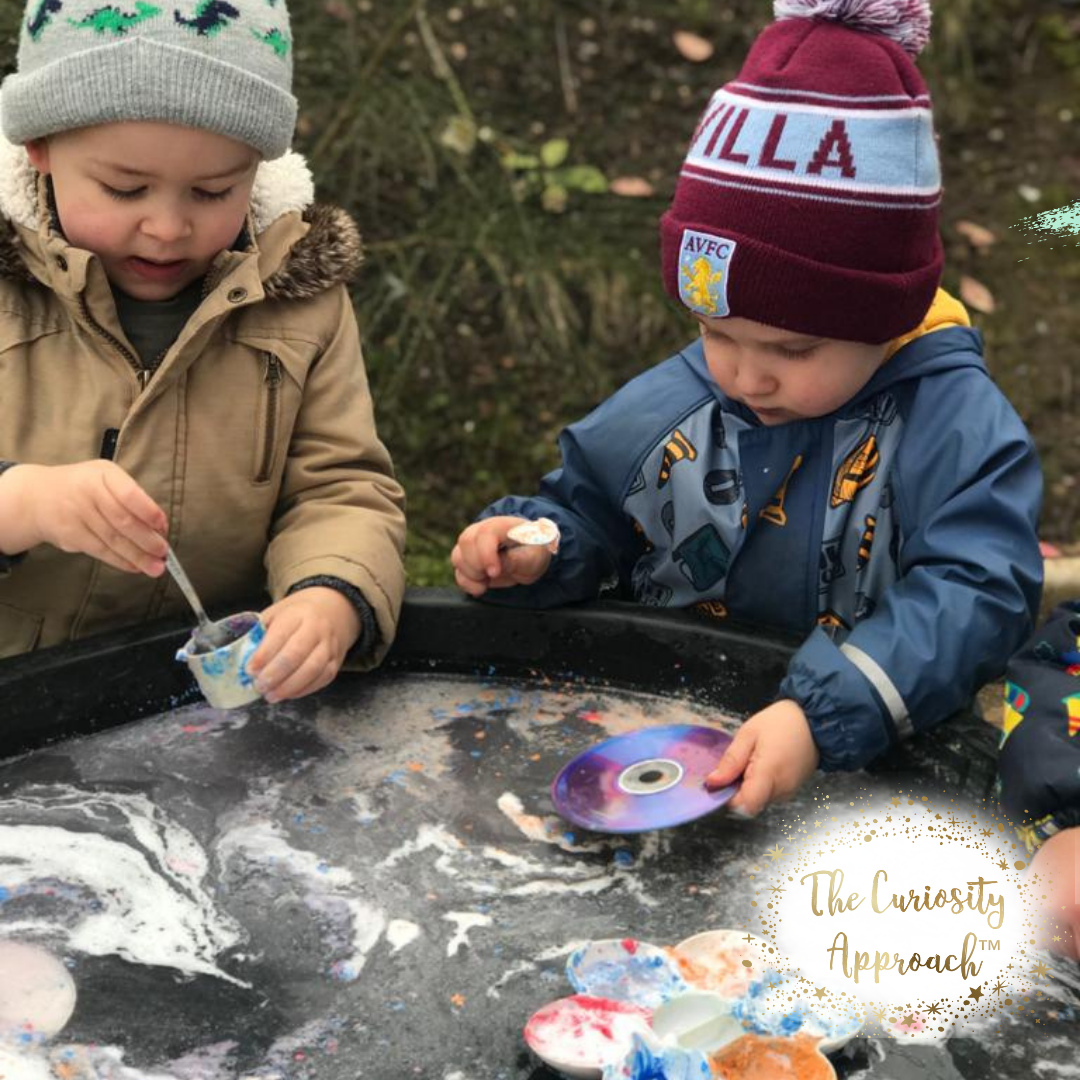
Associate Play: 3-4 Years
Around the ages of three to four, children begin to embrace associate play, a stage characterised by interacting and playing with others. They engage in joint activities, share ideas, and collaborate on imaginative play scenarios. This stage marks a significant leap in social development as children start to understand the concept of shared experiences and build relationships through play.
To encourage associate play, provide resources and open ended resources allowing for collaboration and interaction. This allows children to engage in cooperative play, taking on different roles, and exchanging thoughts and ideas. Authentic resources, dramatic play materials, block play or a pretend play scenario can ignite their imaginations and foster communication and negotiation skills. As children interact and engage in dialogue, they learn to navigate social interactions, express themselves, and develop a sense of empathy and cooperation.
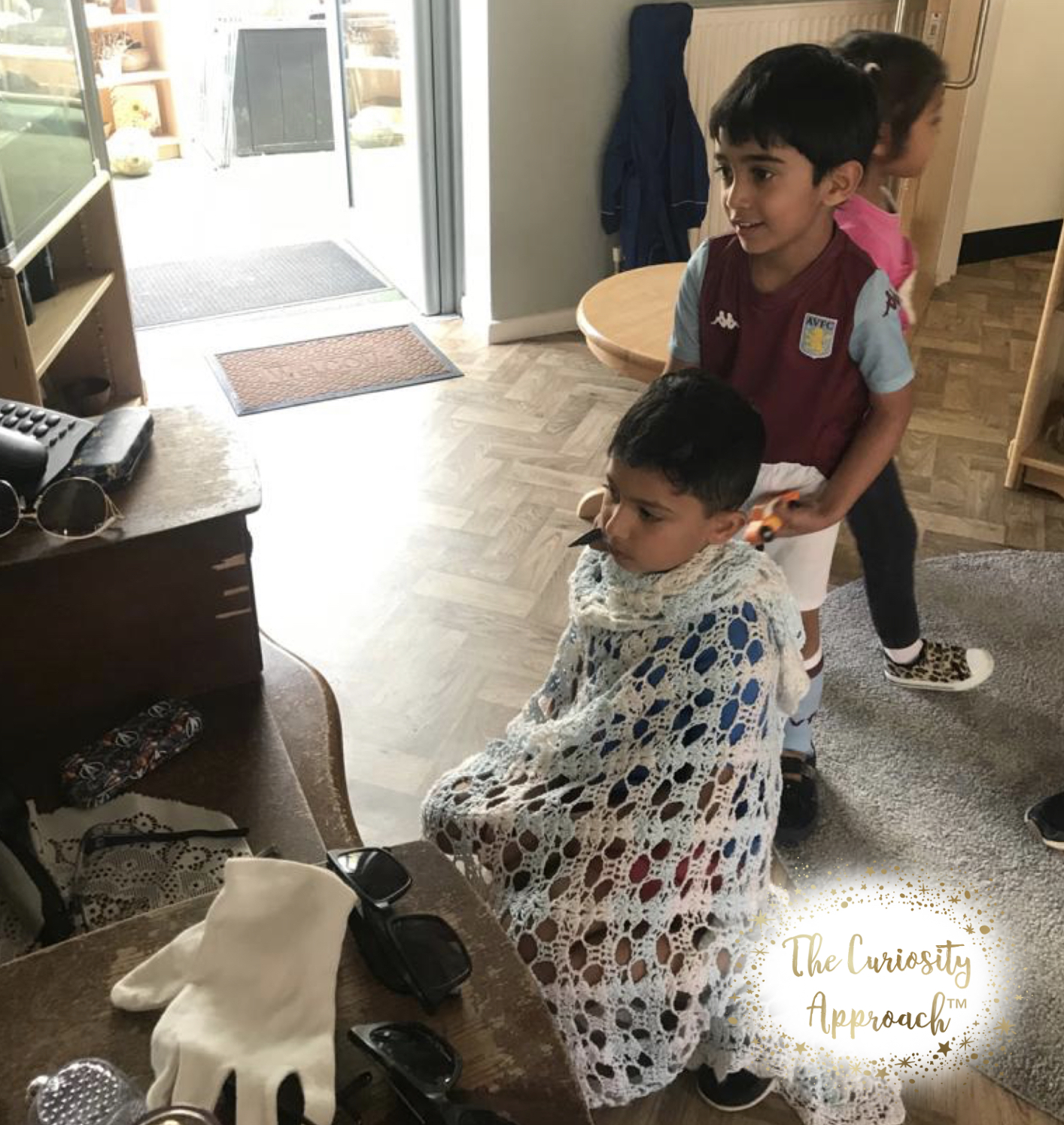
Cooperative Play: 4+ Years
Finally, the stage of cooperative play emerges around the age of four and beyond, representing the pinnacle of social engagement and collaboration. Children actively play with others, adhering to rules, sharing responsibilities, and working together toward common goals. This stage is characterised by teamwork, problem-solving, and the development of complex relationships within the context of play.
To promote cooperative play, allow children the time to become engaged in free play experiences , playing, collaborating and coordination with friends. Providing opportunities for problem solving, take turns, listen to others' ideas, and work together towards a shared outcome. Cooperative play fosters a sense of belonging, builds resilience, and prepares children for future social interactions and group dynamics.
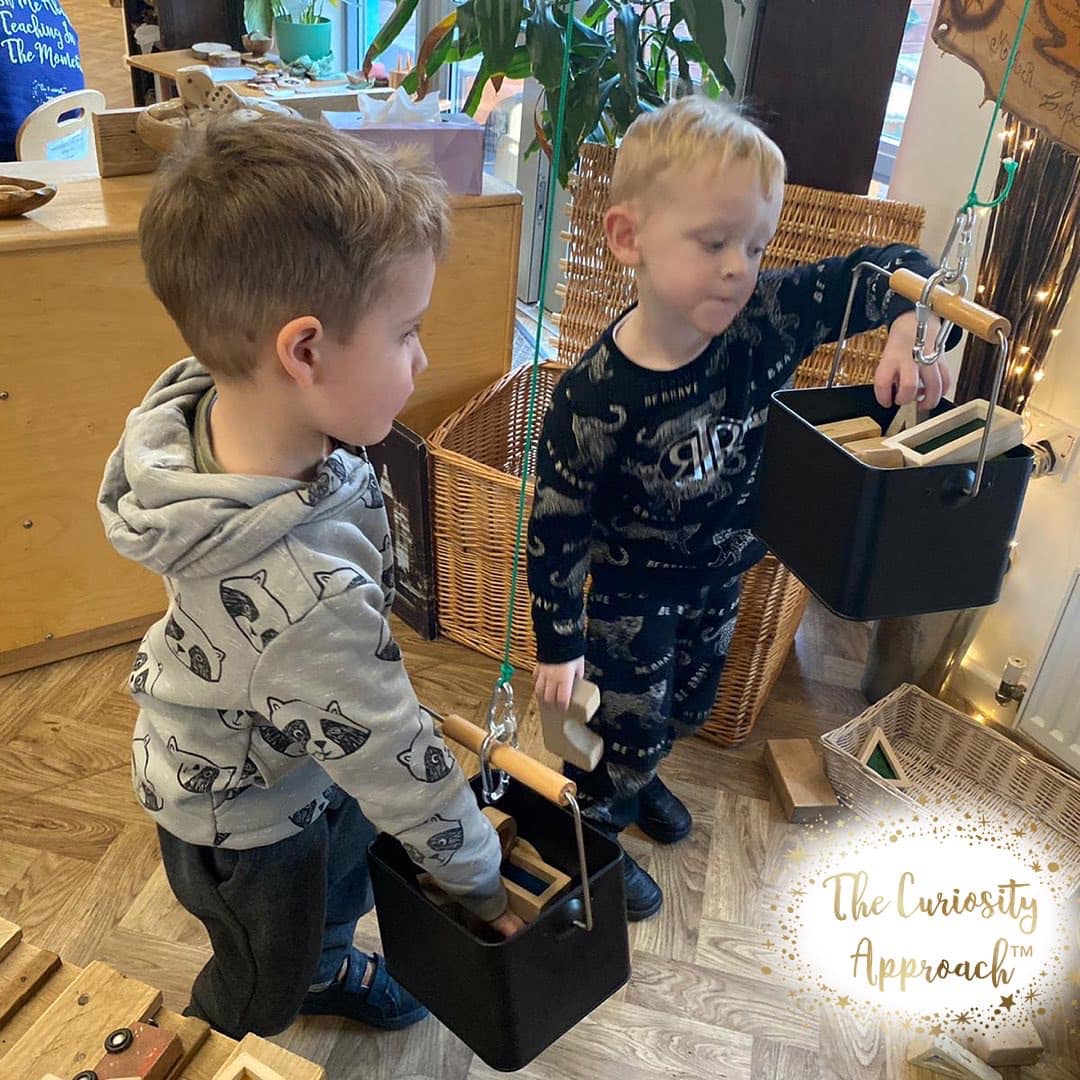
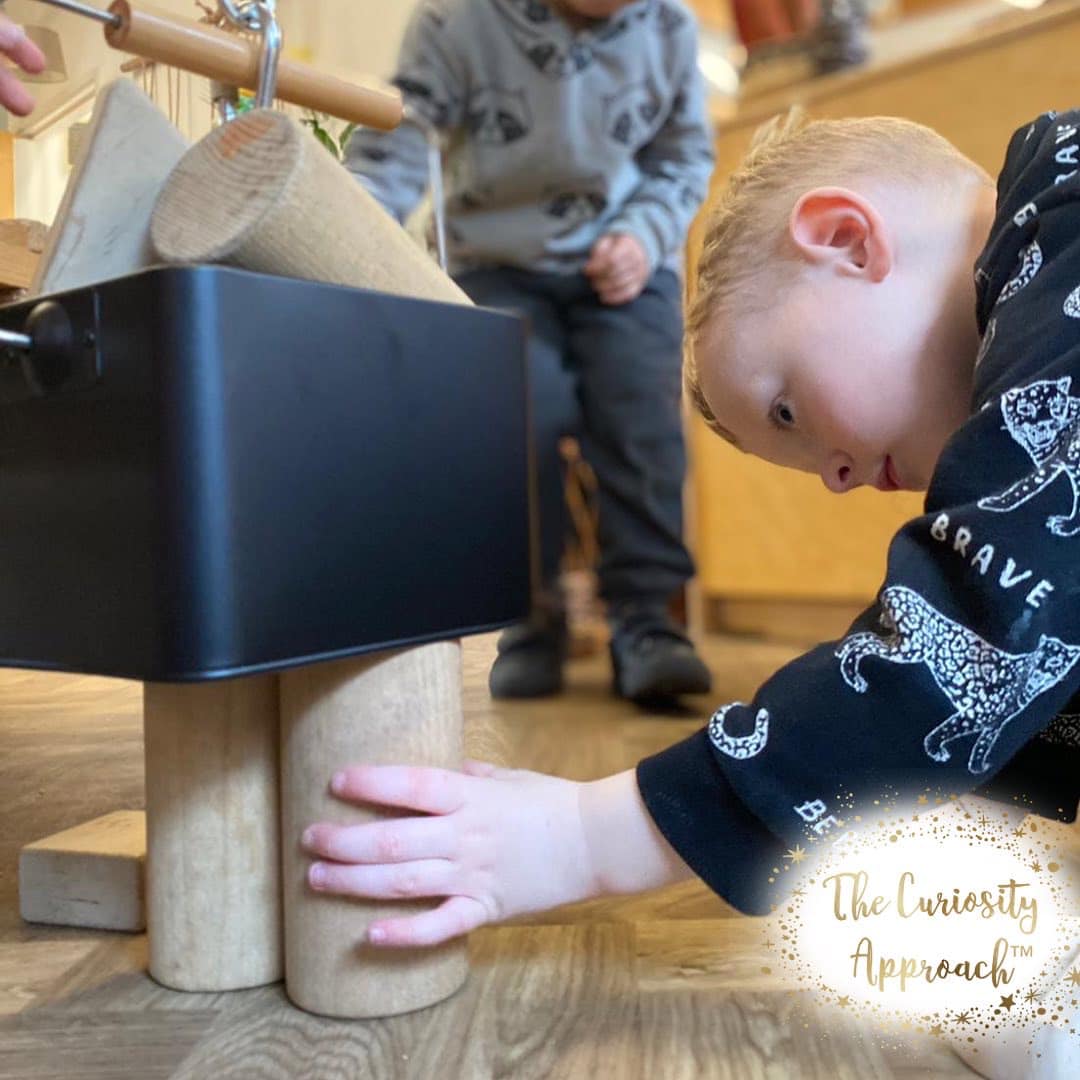
Conclusion:
Play is the essence of childhood, an enchanting journey that spans a lifetime. Through the lens of The Curiosity Approach®, we have unraveled the wondrous 6 stages of play, each offering a unique tapestry of growth and development. From the movements of unoccupied play to the harmonious collaboration of cooperative play, every stage serves as a stepping stone towards holistic development.
As childhood educators, we recognise the power of play in shaping young minds, fostering creativity, and nurturing essential social and cognitive skills. By understanding and embracing the 6 stages of play, parents, caregivers, and educators can provide powerful rich play spaces for children, intentional, age-appropriate environments that support children's natural curiosity and desire for exploration. Let us celebrate the magic of play and create spaces where children can flourish, discover, and connect with the world around them. Want more from us? We have a wealth of blogs, articles , mini and extensive courses. We also have a Curiosity Approach® QUIZ you might like to take. See How Curiosity Approach® inspired you are https://thecuriosityapproach.s...
This blog and all imagery is the intellectual property of The Curiosity Approach® and is subject to copyright protection
